By the books: Green and sometimes pleasant reads
I don’t know where I’d be without books.
Quite apart from the endless pleasures to be had from making new discoveries or returning to cherished texts, nothing makes such good use of the time swallowed up by the daily commute as reading (and with this country’s often-shambolic rail system as it is, nothing else so effectively counters the seething impotence of yet another delay, whether due to miscellaneous objects snagged on overhead lines, faulty trains or, my favourite to date, cows roaming undisciplined and free on the tracks outside Harlow).
Having recently returned to George R Stewart’s Earth Abides for the umpteenth time (it’s one of a handful of books I’ll probably want to go into the box with me when the time comes), it occurred to me that while there are many excellent and worthy environment books out there, very few of them are works of fiction.
With that in mind, here’s a list of 10, in no particular order of merit, I believe are worth hunting out if you fancy your literary escapism laced with a little green consciousness:
 • Earth Abides by George R Stewart (1949)
• Earth Abides by George R Stewart (1949)
The granddaddy of post-apocalyptic fiction, Stewart’s novel exerts a slow and steady fascination as he unfolds a century in the history of planet Earth after Mankind has been all but eradicated by an airborne contagion. Interspersed between sections of narrative in which the protagonist Isherwood and fellow survivors try to make sense of the disaster and fruitlessly rebuild their culture, Stewart quietly observes the gentle process of the world slowly healing itself after being so long subjected to intrusive human activity, chronicling the fall of some species and the rise of others, the time it takes for nature to claw back the asphalt and topple structures. Endlessly captivating and deeply moving.
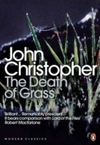 • The Death of Grass by John Christopher (1956)
• The Death of Grass by John Christopher (1956)
A very British apocalypse, this time viewed as an event in progress and one that has a particular resonance in our age of alarm over viral threats. A new strain of virus has devastated east Asia’s rice harvest, creating massive famine before mutating and moving west to infect wheat, barley and every other form of grass in Europe; as the US and Australasia impose drastic quarantines, the loss of the staple food spurs panic and collapse in England as an architect, his friend and their families struggle across the increasingly anarchic and denuded country to the supposed haven of an isolated farm.
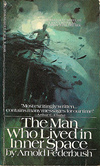 • The Man Who Lived in Inner Space by Arnold Federbush (1973)
• The Man Who Lived in Inner Space by Arnold Federbush (1973)
I first discovered this under-regarded gem via the school book club and have been haunted by it ever since. An engineer, crippled and bitter after an industrial accident, finds he can no longer live with his disgust for humanity and so creates a submersible craft able to support a new life in the oceans, liberating and taking with him a seal from an nearby abandoned aquarium; in time, his flesh metamorphoses into a new form that literally allows him to live at peace in the sea – until his fury at growing industrial pollution seeping out from the coasts drives him into a violent confrontation with the society he has forsaken.
 • The Lorax by Dr Seuss (1971)
• The Lorax by Dr Seuss (1971)
The genius behind The Cat in the Hat and Fox in Socks takes a stand for the environment in this modern children’s classic which considers an increasingly industrialised society and the harmful impact it has on nature. Industry is personified as the greedy Once-ler (and, tellingly, the marvellous illustrations never show his face) who initiated a cycle of rapacious deforestation to fuel his factories and fill his pockets by churning out products nobody really needs, while the environment is presented as the Lorax, who speaks for the trees to little avail. With the last remaining tree seed handed over to the care of the young boy listening to the account of how his world came to be so barren and polluted, the book couldn’t make its concerns more clear.
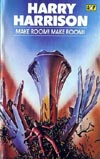 • Make Room! Make Room! by Harry Harrison (1966)
• Make Room! Make Room! by Harry Harrison (1966)
Harrison’s bleak dystopia of life in New York City in 1999 turns out to be alarmingly on the money; human reproduction (still the unapproachable elephant in the room) has gone unchecked to the point that the world’s great cities are at bursting point, employment is running amuck, water shortages leave everybody thirsting and drive militant rural dwellers to sabotage supply pipes, the seemingly endless heat wave has helped create a dustbowl occupying the entire US mid-west, food production is collapsing, the oceans are dead and the vast majority live on subsistence level hand-outs of synthetic foodstuffs. The film version Soylent Green added a cannibal twist to the climax but, although it’s a logical conclusion, the book simply doesn’t need such a device to add to its chilling power.
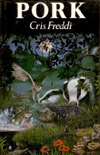 • Pork by Cris Freddi (1981)
• Pork by Cris Freddi (1981)
A unique collection of animal stories ideally suited for those weary of Disney’s tiresomely cute creatures, the characters in Pork are resolutely raw and on the whole lead lives so short, nasty and brutish that Thomas Hobbes would likely deem this required bedtime reading for little ones. Freddi makes such a good job of inhabiting this harsh but realistic world of predators and prey that the British countryside comes alive as a vigorous environment as alien as any found in science fiction.
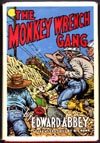 • The Monkey Wrench Gang by Edward Abbey (1975)
• The Monkey Wrench Gang by Edward Abbey (1975)
An intentionally broad and comic take on environmental protest, Abbey’s knockabout tale follows the activities of a team comprising a river guide, an eccentric Vietnam veteran, a surgeon and his female assistant, misfits united by a common outrage at the depredations of industrial America and its accompanying culture of consumerism. Dedicated to the destruction of a system they regard as hellbent on destroying the environment, they set about sabotaging bulldozers, trains, advertising billboards, a dam project, strip-mines, highways and bridges.
 • The Jungle Book by Rudyard Kipling (1894)
• The Jungle Book by Rudyard Kipling (1894)
Okay, so this timeless classic doesn’t carry any overt environmental message and it does use anthropomorphised animal characters to make moral points, but I think it deserves a place here for its sheer brilliance at captivating the reader and for inspiring awe and affection for the denizens of the Indian jungle. Just about everybody knows the story of Mowgli, the orphan raised in the wilderness by a wolf pack, but every bit as memorable are the tales of brave mongoose Rikki-Tikki-Tavi and his deadly duel with cobras Naag and Nagaina, Kaa the python and, of course, the unforgettable Shere Khan.
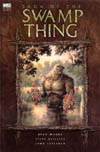 • The Saga of the Swamp Thing by Alan Moore & various (1984-87)
• The Saga of the Swamp Thing by Alan Moore & various (1984-87)
If there’s anybody still our there who believes comic books are strictly the stuff of childhood and far beneath the merit of ‘respectable’ literature, the work of British comics writer Alan Moore is a perfect riposte. When DC hired him to reinvigorate The Saga of the Swamp Thing, he turned the title on its head and changed it from a piece of fun but often corny Gothic horror into a thoughtful meditation on the world’s interconnected and interdependent environments. Instead of a man transformed into a plant, Moore reimagined his hero as a primal plant elemental which briefly thought it was a man, and used its adventures to intelligently address contemporary ecological concerns as it became a champion of The Green.
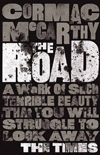 • The Road by Cormac McCarthy (2006)
• The Road by Cormac McCarthy (2006)
As powerful a call to respect and protect the environment as I’ve ever read, McCarthy’s bleak novel makes a passionate case for nature by depicting a world in which it’s all but gone. Following some unspecified calamity in the near future, a father and his son make their way through a ruined America cringing under a perpetual winter, surviving on scavenged canned goods and hiding from roving gangs of desperate cannibals in a landscape devoid of animal life and in which even the vegetation is in retreat and dying. You really don’t know what you’ve got until it’s gone.

